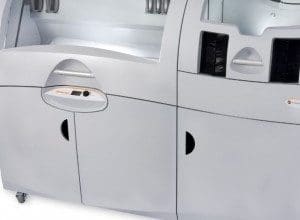
Contents
Stereolithography and Polyjet printing enable 3D models made of transparent material
Whoever thinks of objects from the 3D printer, usually sees massive, opaque objects in mind. In fact, such 3D prints still make up the lion’s share of the models and workpieces generated by rapid prototyping.
Anyone who is familiar with 3D printing technology, especially from home users, is also inclined to automatically associate the 3D printout of objects and models with the warping problem. On the other hand, very few 3D printing private users should be aware that this problem occurs in high-end rangei.e. in the professional 3D printing service area, in which we at 3D Activation are active, has long since been solved thanks to more complex 3D printing systems.
As a contrast to these two common cliché images of 3D printed products, we would like to offer you this fascinating opportunity today more translucenti.e. translucent 3D materials, commonly referred to as transparent or translucent materials.
Stereolithography and Polyjet printing – similarities and differences
3D prints from transparent materials are made possible on the one hand by the stereolithography process (with epoxy) and on the other hand by polyjet printing (with resin).
In both 3D printing processes, the starting material is in liquid form before. In addition, these are denatured natural resins whose most important properties are that they are photopolymers (ie light-sensitive plastics).
While in stereolithography, the mother of all 3D printing processes, the model initially solidifies on the printing plate in order to then be cured in the darkroom, curing in the Polyjet process takes place immediately using a UV light source integrated directly in the print head .

Possible uses from glasses to cars
Combining transparency (or translucency) with dimensional stability and an exceptionally smooth surface, Polyjet print-generated resin 3D models are used in a wide range of fields, from eyeglass frames and lighting covers to medical device components.
A similarly broad field of application is also offered by epoxy processed using the stereolithography process, which is also highly valued in the automotive industry and as a design sample.
Have we sparked your interest in our transparent materials? Then you should visit our website. There you can also find out more about our other 3D materials, printing processes and services.
to materials


